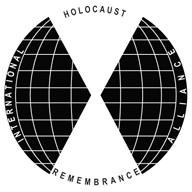“We share a commitment to commemorate the victims of the Holocaust and to honour those who stood against it.”
-- Declaration of the Stockholm International Forum on the Holocaust
 INTERNATIONAL HOLOCAUST REMEMBRANCE ALLIANCE
INTERNATIONAL HOLOCAUST REMEMBRANCE ALLIANCE
“We share a commitment to commemorate the victims of the Holocaust and to honour those who stood against it.”
-- Declaration of the Stockholm International Forum on the Holocaust
Foreign Minister Urmas Paet opened the exhibit in the Museum of Occupations entitled "Convoy no. 73-Convoy with a Singular Fate", which is dedicated to memory of the 900 French Jews who were deported to Tallinn and Kaunas in 1944.
Foreign Minister Urmas Paet stated that the crimes against humanity committed during the Second World War still require our attention. "We must work together in the name of getting archives opened to everyone, increasing peoples' awareness of what happened, and making sure that these crimes against humanity are never repeated," Paet emphasised in his speech.
"To this day we do not know, and we will probably never know, exactly how many people sentenced to death were brought to occupied Estonia. People became numbers that were only known to the planners and implementers of the crimes," stated Paet, adding that a concrete list of Holocaust victims is still being worked on today.
"We can try, but we will never completely understand what those people were feeling, the ones who were sent from occupied France to occupied Estonia in May 1944 as part of 'convoy nr. 73'," said Paet. "In a moment, the future was slashed and what used to be Europe became, for the captive peoples, a uniformly grey spider web of railway stations and concentration camps, in which each thread served a role in the devilish system," the foreign minister added.
Paet stated that within the past decades an invaluable amount of work has been done in Holocaust research and preserving the memory of the Holocaust. "Estonia gained the opportunity to do such things after it was freed from Soviet occupation in 1991," Paet noted.
Out of the 79 convoys that deported French Jews from Drancy in France between March 1942 and August 1944, only one was sent to the Baltics, for reasons that are still unknown. It was convoy number 73, which departed from Drancy on 15 May 1944. Of the people in the convoy, nearly 600 men were sent to Fort IX in Kaunas and five cars carrying about 300 people moved on to Tallinn, where they most likely arrived on 20 May. On 1 September, 34 survivors of convoy no. 73 were deported to the Stutthof concentration camp. Only 22 survivors returned to France in 1945.
Other participants in the opening of the exhibit were chairwoman of the Estonian Jewish Community Alla Jakobson, director of the Museum of Occupations Heiki Ahonen, and French Ambassador to Estonia Frédéric Billet. The exhibit dedicated to the memory of those deported in convoy nr. 73 was created by the association "Relatives and Friends of the Deported in Convoy 73" with the support of the Shoah Memorial Fund, French Embassy in Estonia, and the Estonian Embassy in France. The exhibit serves as an introduction to the opening of a memorial stone dedicated to the memory of those deported in convoy number 73 that will be opened on 2 June near Patarei Prison, where the deported were held.
Both France and Estonia are members of the Task Force for International Co-operation on Holocaust Education, Remembrance and Research and help to preserve the memory of the Holocaust as well as provide a responsible education for youth, who will shape our future.